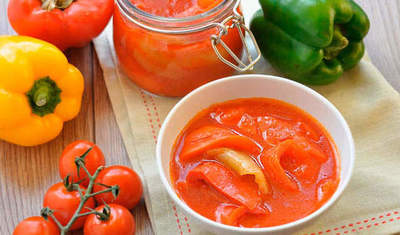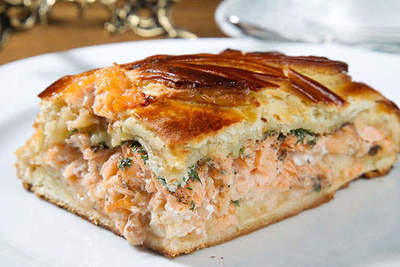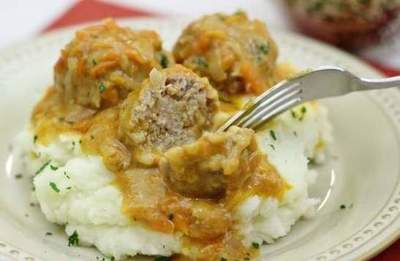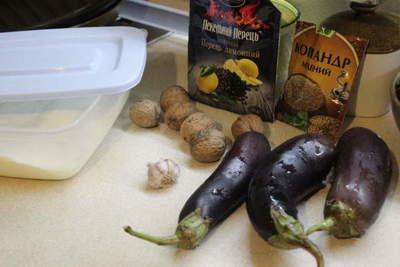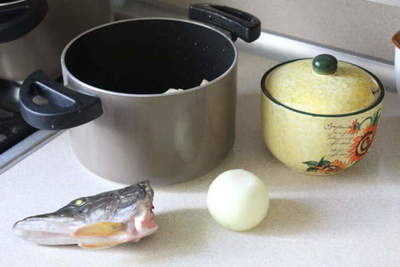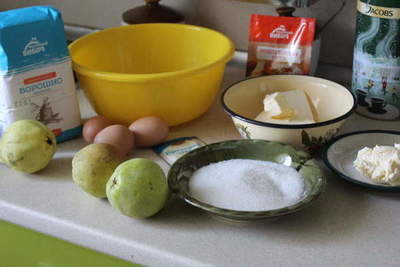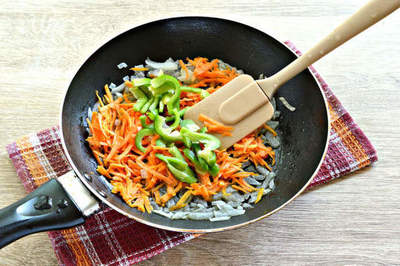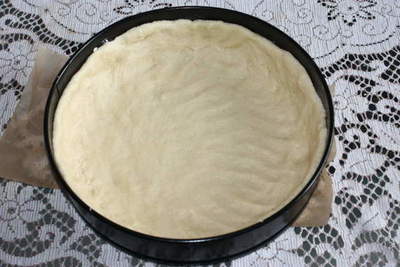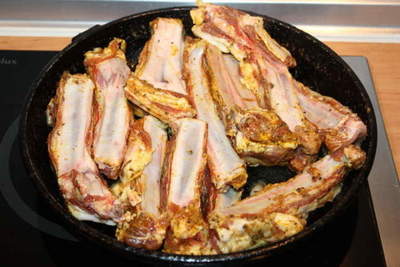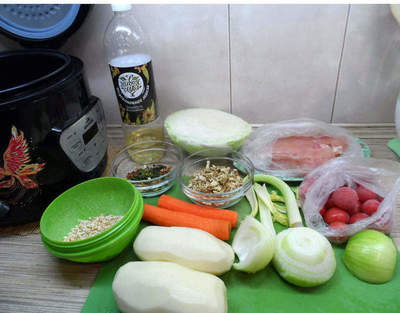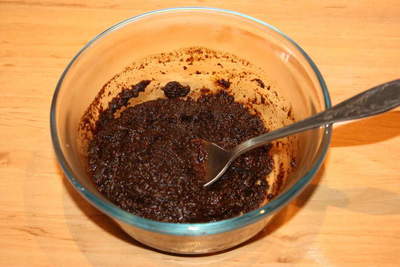Pesto
With this unique sauce, even the most ordinary dish turns into a gourmet delicacy. The recipe for pesto very simple, it can be prepared in haste at home, which goes well with pasta and many meat dishes. Pesto - this is another classic Italian cooking sauce.
Homemade pesto - the best sauce for pasta, a great way to enjoy an abundance of spicy basil and give the dish an exquisite flavor with a spicy touch of Italian style.
Classic pesto - step by step recipe

Prepare all the necessary products. Basil Wash in cold water and separate the leaves from the twigs. Peel the garlic.
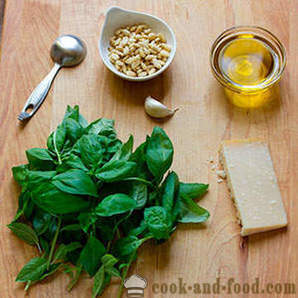
Rub a small small piece of cheese or a special device on a fine grater.

In a cup combine Put on fresh basil leaves, a clove of garlic and pine nuts. Simply mix all ingredients.
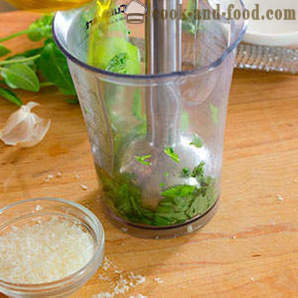
Next, scrolling at low speed, a thin stream, slowly add the olive oil.
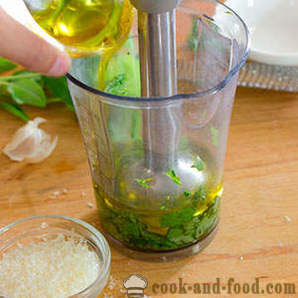
When the weight will more uniform appearance, add grated cheese, a pinch of salt and mix blender to a smooth consistency.
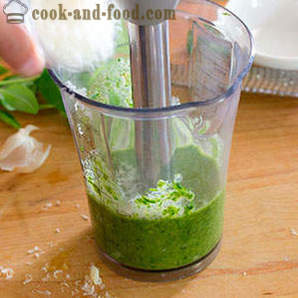
Remove the cup combine, can if necessary also a little salt and then pour into a separate bowl or jar.
Pesto sauce - is a versatile product that you definitely need to keep in your fridge. If you use it as a flavor enhancer, you need a very small amount. In this case, fat and salt content in the sauce will not have much impact on the overall balance of nutrients in the dish. Tips to the recipe:
- To prepare perfect pesto, it is imperative to use only fresh basil.
- If you experience difficulties with the availability of pine nuts, they can be replaced with walnuts.
- Also, be sure to use select the best varieties of cheese. Do not use the grated cheese, which may have been stored for a long time in the refrigerator. Rub should immediately before cooking.
- In case of contact with the metal Basilica tend to oxidation, which causes loss of taste and therefore, when you scroll in a cup from the blender often add lemon juice, but it's a true taste of changes. Best of all, in order to avoid undesirable consequences, it is necessary to put a piece of ice or pre-soak the basil leaves in ice water.
History, pesto composition and nutritional value of
Pesto comes from Genoa (Italy). Traditionally, this pesto is made from basil leaves, pine nuts, garlic, Parmesan cheese and olive oil pounded together to a paste.
Modern pesto has many variations. As its ingredients can be used sun-dried tomatoes, red pepper, herbs such as parsley or coriander, as well as all kinds of nuts.
After opening the package from shops pesto can be stored for about a week. To extend shelf life, you can just freeze in a closed container with ice cubes. Grease
Since the main ingredients of the sauce are oils, nuts, cheese, easily guess that pesto are high in fat. Most of its species the fat content was 40-50%, although less traditional pesto with capsicum, this figure is much lower.
All this is not necessarily a bad thing. It is important to take into account how the product is used. Pesto usually has a strong aroma. If it is used in cooking as an ingredient, which imparts a distinctive flavor to the food, it will require only a small amount, which is unlikely to have a big impact on the total fat content in the finished dish.
On the other hand, if you plan to empty the entire container, dipping into it, such as croutons, high fat becomes a serious problem.
In most of the samples purchased pesto saturated fat content varies in the range of 1, 1 to 8, and 5 g per 100 g of product. Saturated fat - a "bad" fats, and too large number of them in your diet can lead to high cholesterol. If pesto - a frequent and "abundant" guest at your table, you will definitely need to pay attention to the content of saturated fat: Try to find the product in which they are less than 5 g per 100 g of sauce.
Energy
Fatty foods are often also high calorie (providing the body a lot of energy), but the amount of consumption of calories, of course, depends on how much sauce you use. At the lower end of the energy scale is pesto with roasted pepper, tablespoon of which provides the body 120 kJ of energy, but the same amount pesto with basil and roasted garlic contains 430 kJ.
Salt
Nutritionists recommend to reduce the salt content (sodium chloride) in our diet, and this recommendation is especially important for people with high blood pressure. Tablespoon pesto average weighs about 18 g, and sodium therein contained 31-88 mg. This dose is not critical, particularly in view of the fact that it can consume a maximum of up to 1600 mg per day. But if you use pesto as a sauce for dipping, do not apply it to other salty foods such as potato chips or salted crackers.































